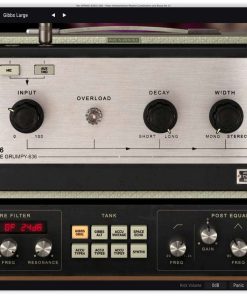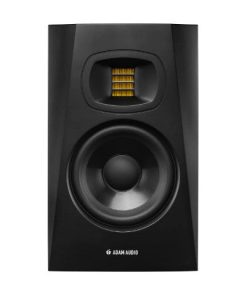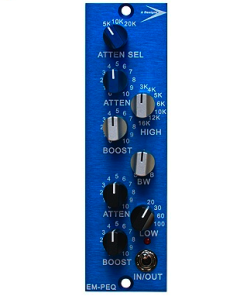Arturia Rev SPRING-636 – Snappy physical reverb Arturia
$ 99,00 $ 49,50
Combining zingy, vibrant spring reverb with a saturated, fuzzy germanium preamp, this can add serious tone to your tracks, and add vintage dub vibes to anything you like.
The bouncy “boing” of a spring reverb has brought joy, soul, and atmosphere to countless records since the technology was devised in the 30s. Now Rev SPRING-636 will add that authentic, physical tone to your DAW.
It’s this marriage of audio techniques and modelling technology that let us create the best-sounding software spring reverb ever heard.
Vibrant spring tanks
Multiple spring reverb units in one fantastic, character-packed software effect
Iconic sound
The unrivaled sound of a physical spring resonating with your music
Germanium drive
A super-crunchy, musical input that lets you drive it hard for extra distorted tone.
Originally invented to add some “space” to the sound of Hammond Organs way back in the 30s, the reverb is a relatively simple design of a suspended spring inside a tank. The sound of the instrument is passed through the spring, and picked up again, blended into the original sound, and that’s it!
For the core unit, we based our software reverb on the legendary Grampian 636 spring reverb. The original 636 was the go-to reverb of The Who’s Pete Townshend, of legendary dub producer Lee Scratch Perry, and a cornerstone of reggae and ska music.
The great thing about spring reverbs, and one of the reasons they have been so popular for the last 90 years, is that every one of them seems to have a unique tonal character. Some are bright, some zap, some zing, and poing, and some boing, but they all have their uses. This is one of the reasons we’ve included many different “spring tank” models in Rev SPRING-636: you can find the one that suits your music best.
Thanks to the power of our TAE® and Phi® modelling technologies, we’ve been able to recreate everything that made the 636, and spring reverbs in general, so very special. True Analog Emulation® handles the electronic side, analyzing and accurately modelling the way the circuitry works, and how it responds to various audio signals. Phi® lets us study the physical nature of the reverb, how the spring reacts, how the tank’s resonance changes the sound.
Main Features
- Virtual recreation of famed classic Grampian spring reverb
- Original electronic path accurately modeled, using Arturia’s state-of-the-art TAE® analog modeling
- 2 preamp types with their very own sonic color
- 8 swappable spring tanks
- Pre-delay
- Multimode pre-filter
- Parametric EQ
- Input-Output gain link switch
- Resizable window
- Comprehensive set of presets
Platforms specifications
Windows
- Win 10+ (64bit)
- 4 GB RAM
- 4 cores CPU, 3.4 GHz (4.0 GHz Turbo-boost)
- 1GB free hard disk space
- OpenGL 2.0 compatible GPU
Required configuration
- VST, AAX, Audio Unit, NKS (64-bit DAWs only).
Apple
- Mac OS 10.13+
- 4 GB RAM
- 4 cores CPU, 3.4 GHz (4.0 GHz Turbo-boost) or M1 CPU
- 1GB free hard disk space
- OpenGL 2.0 compatible GPU
Prompt Delivery and Professional Packaging
Our long-standing partnership with UPS FedEx DHL and other global carriers lets us offer a range of shipping services. Our warehouse staff is extremely skilled and will package your items according to our precise and exact specifications. Your goods will undergo an extensive inspection and be safely packaged prior to being sent out. Each day, we ship to thousands of customers in many countries. The fact that we are committed to becoming the biggest online retailer in the World is clear. These warehouses are in Europe in the same way as they are in USA.
Note: Orders that include more than one item are assigned a processing period depending on the item.
Before shipping, we will inspect thoroughly the items you have ordered. Most orders are shipped within 48 hours. Expected delivery time is between 3-7 days.
Returns
Stock is dynamic. It's not entirely managed by us since we are involved with multiple entities, including the factory and the storage. The actual stock can change at any moment. It is possible that your order may be out of stock once the order has been placed.
Our policy lasts for 30 days. We cannot exchange or refund your order if it has been 30 days from the date of purchase.
For your item to be returned it must be in its original packaging, unopened and in the condition you received it. The item must be in its original packaging.
Related products
Recording Equipments
Monitor
500 Series
Monitor
500 Series
Mic Preamp
Mic Preamp
Microphones
Accessories
Monitor Systems
Accessories
Recording Equipments
Microphones
Microphones
Accessories
Microphones
Monitor
Accessories
Microphones
Monitor
Equalizers
Monitor Systems
Recording Equipments
































































